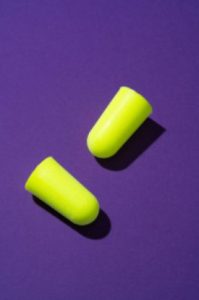- AI
- Arbitration
- Asia
- Automobile
- Bangladesh
- Banking
- Biodiversity
- Biological Inventions
- bLAWgathon
- Brand Valuation
- Business
- Celebrity Rights
- Company Act
- Company Law
- Competition Law
- Constitutional Law
- Consumer Law
- Consumer Protection Authority
- Copyright
- Copyright Infringement
- Copyright Litigation
- Corporate Law
- Counterfeiting
- Covid
- Design
- Digital Media
- Digital Right Management
- Dispute
- Educational Conferences/ Seminar
- Environment Law Practice
- ESIC Act
- EX-Parte
- Farmer Right
- Fashion Law
- FDI
- FERs
- Foreign filing license
- Foreign Law
- Gaming Industry
- GDPR
- Geographical Indication (GI)
- GIg Economy
- Hi Tech Patent Commercialisation
- Hi Tech Patent Litigation
- IBC
- India
- Indonesia
- Intellectual Property
- Intellectual Property Protection
- IP Commercialization
- IP Licensing
- IP Litigation
- IP Practice in India
- IPAB
- IPAB Decisions
- IT Act
- IVF technique
- Judiciary
- Khadi Industries
- labour Law
- Legal Case
- Legal Issues
- Lex Causae
- Licensing
- Live-in relationships
- Lok Sabha Bill
- Marriage Act
- Maternity Benefit Act
- Media & Entertainment Law
- Mediation Act
- Member of Parliament
- Mergers & Acquisition
- Myanmar
- NCLT
- NEPAL
- News & Updates
- Non-Disclosure Agreement
- Online Gaming
- Patent Act
- Patent Commercialisation
- Patent Fess
- Patent Filing
- patent infringement
- Patent Licensing
- Patent Litigation
- Patent Marketing
- Patent Opposition
- Patent Rule Amendment
- Patents
- Personality rights
- pharma
- Pharma- biotech- Patent Commercialisation
- Pharma/Biotech Patent Litigations
- Pollution
- Posh Act
- Protection of SMEs
- RERA
- Section 3(D)
- Signapore
- Social Media
- Sports Law
- Stamp Duty
- Stock Exchange
- Surrogacy in India
- TAX
- Technology
- Telecom Law
- Telecommunications
- Thailand
- Trademark
- Trademark Infringement
- Trademark Litigation
- Traditional Knowledge
- UAE
- Uncategorized
- USPTO
- Vietnam
- WIPO
Moldex has been producing foam ear plugs with a specific bright green color. Since the beginning of its business in 1982 it has sold over 1.6 billion pairs of them. It does not have a federal registration of its green color but it initiated a law suit against the defendant, McKeon in the present case after it began selling similar coloured ear plugs. Both the parties filed for summary judgments and the district court granted it in favour of McKeon.
McKeon claims the green colour to be a functional part of the product. The district court held that the colour of the plug was essential “to increase visibility and facilitate safety compliance checks” and thus it is essential to the use of the ear plug. It fulfils the test set in Qualitex and TrafFix Devices, Inc. v. Marketing Displays, Inc., 532 U.S. 23 (2001).
[Picture Credit: gettyimage]
Judgment
The court in the present case discussed the issue of functionality.

The Supreme Court has previously held that colour can also be protected as a trade mark as sometimes the colour neither forms an essential aspect of a product’s use nor does it affects its quality or cost whatso ever.
In the present case the District court observed that the green colour of the plug was “essential” for the purpose of ear plugs as it allows it to be seen during safety compliance checks, making it functional.
There are essentially two steps of determining aesthetic functionality of a product- First is the Inwood test (focusing on the function of the mark) which has been mentioned before; and second is the Qualitex test which is an inquiry with respect to the feature of a mark and whether granting protection to it would impose a significant non-reputation-related competitive disadvantage. Basically, the test provides that in cases where the colour of a mark serves a function, the courts must examine whether that feature, colour in this case, would be a disadvantage to the competition in the market.
In the present case the Court acknowledged that the Inwood test could not be applied to the Moldex’s green color.
The Court agreed to Moldex’s claim that- “there are hundreds of other available colors that could accomplish the goal of making the ear plugs visible during safety compliance checks. Thus, an ear plug manufacturer prohibited from selling Moldex’s green shade would still be able to compete in the marketplace”. On basis of this it remanded the district court to consider the functionality of the mark in light of Qualitex test.
Author: Saransh Chaturvedi (Advocate, LLM (IIT Kharagpur) – an associate at Khurana & Khurana, Advocates and IP Attorney, in case of any queries please contact/write back to us via email saransh@iiprd.com.



